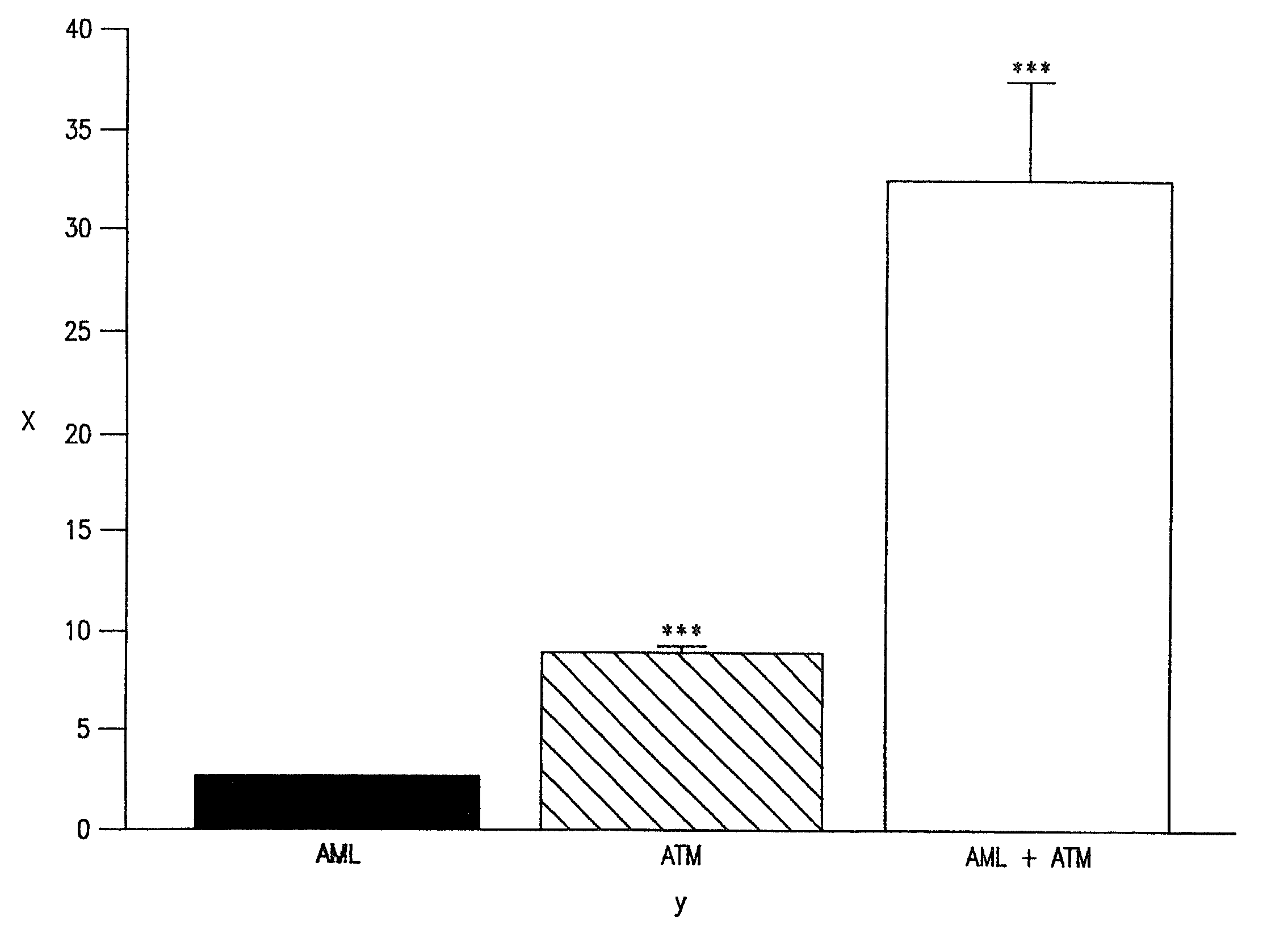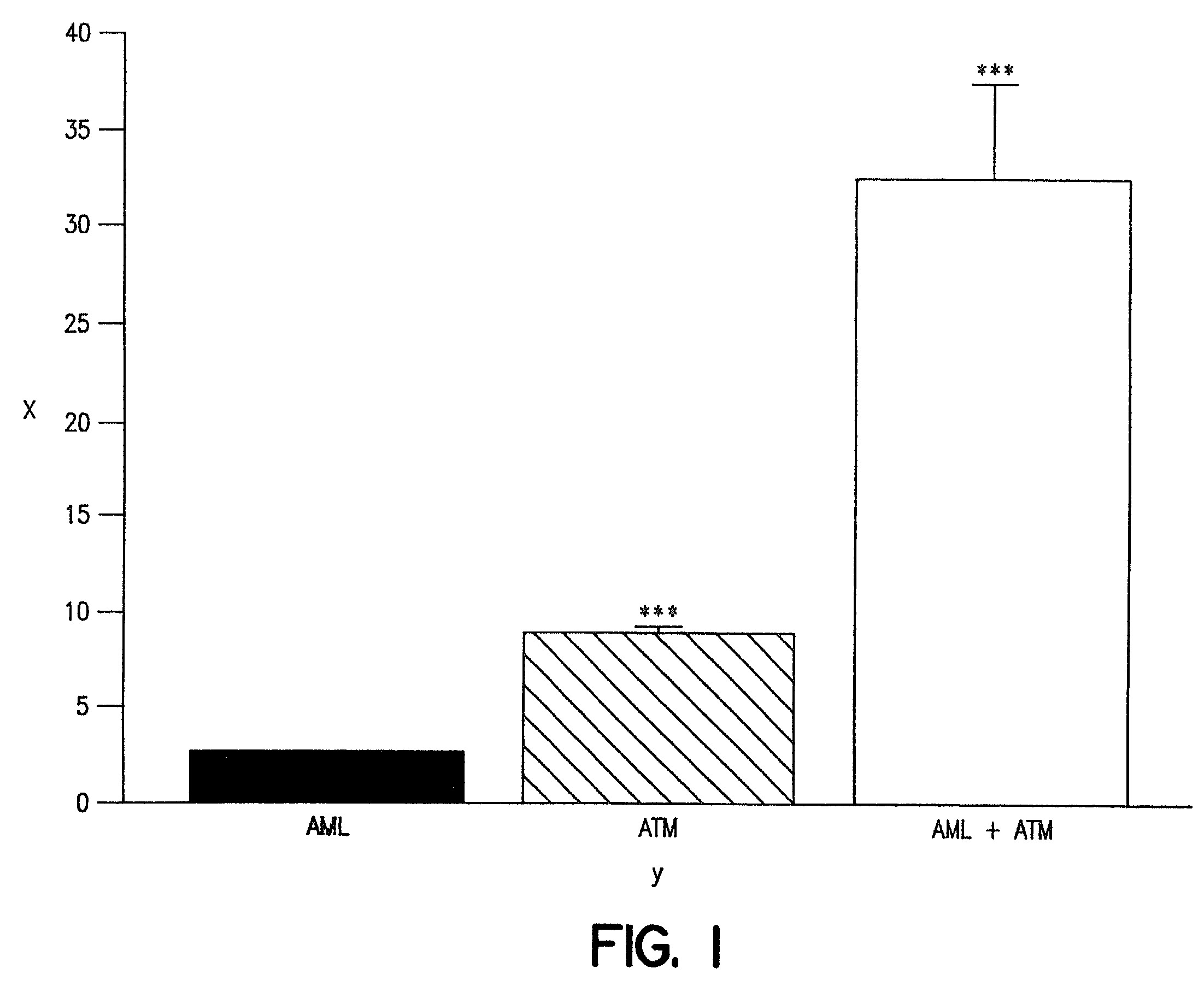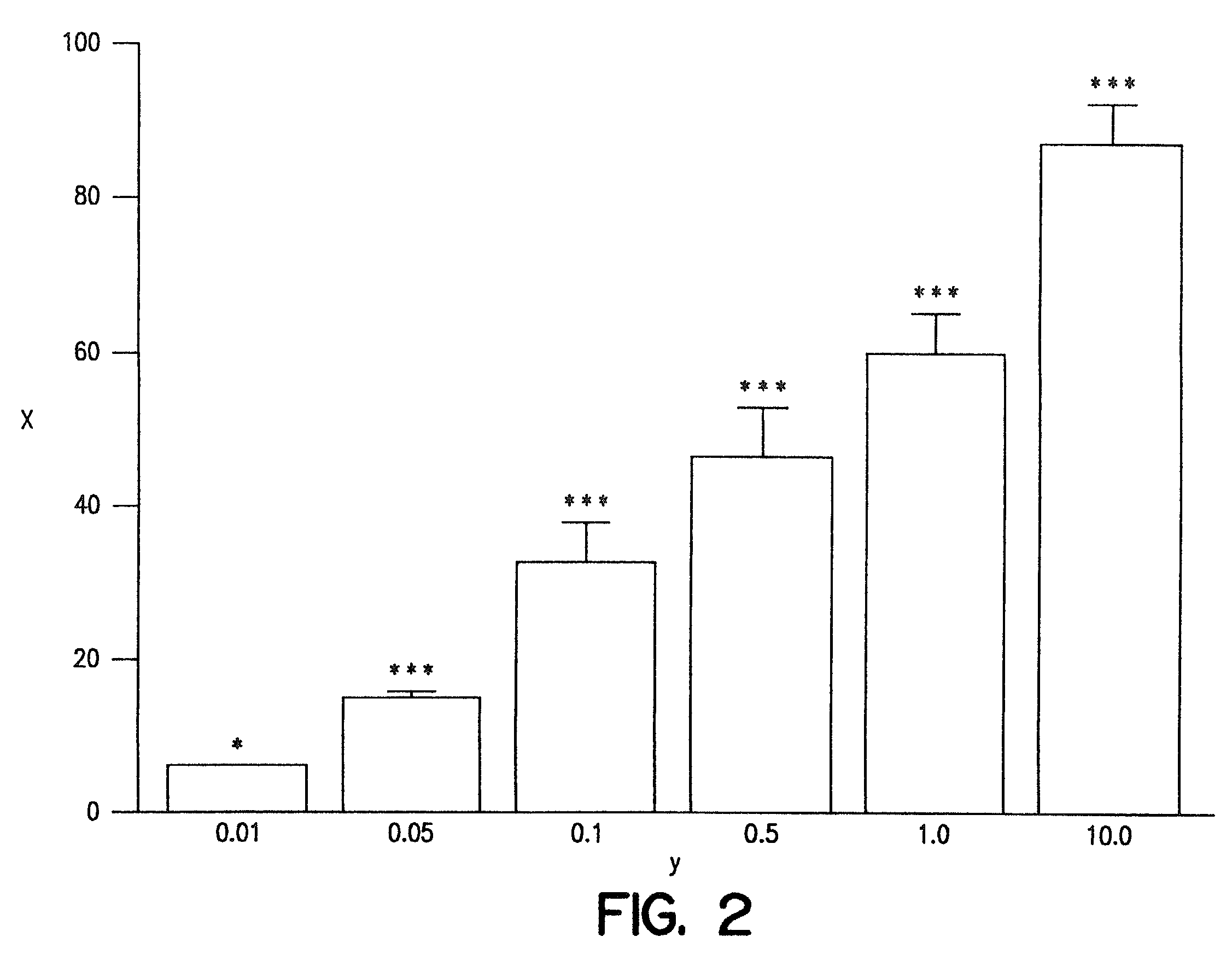Synergistic effects of amlodipine and atorvastatin metabolite as a basis for combination therapy
a technology of atorvastatin and amlodipine, which is applied in the field of synergistic effects of amlodipine and atorvastatin metabolites as a basis for combination therapy, can solve the problems of high synergistic and ineffective reproduction of the antioxidant activity of the combination of these drugs at therapeutic levels
- Summary
- Abstract
- Description
- Claims
- Application Information
AI Technical Summary
Benefits of technology
Problems solved by technology
Method used
Image
Examples
Embodiment Construction
Synergistic Antioxidant Effects of Amlodipine with Atorvastatin Metabolite in Lipid Membranes:
[0020]The separate and combined dose-dependent antioxidant activities of AML, and ATM were tested in membrane vesicles reconstituted from phospholipids enriched with cholesterol and the PUFA, dilinoleoyl phosphatidylcholine, at a 0.5:1 mole ratio. Membrane vesicles were used in these experiments for the following reasons: 1) this system is well-defined and highly reproducible; 2) linoleic acid represents the primary target for oxidative damage and is common in vascular cell membranes and lipoprotein particles; 3) this membrane system does not contain calcium channels or the HMG CoA reductase enzyme and; 4) lipid peroxidation in this system can be initiated spontaneously at 37° C. in the absence of exogenous chemical initiators, such as high levels of iron and ascorbate. In these experiments, oxidation occurred in a gradual, time-dependent manner that was measured spectrophotometrically over...
PUM
| Property | Measurement | Unit |
|---|---|---|
| mole ratio | aaaaa | aaaaa |
| concentration | aaaaa | aaaaa |
| concentration | aaaaa | aaaaa |
Abstract
Description
Claims
Application Information
 Login to View More
Login to View More - R&D
- Intellectual Property
- Life Sciences
- Materials
- Tech Scout
- Unparalleled Data Quality
- Higher Quality Content
- 60% Fewer Hallucinations
Browse by: Latest US Patents, China's latest patents, Technical Efficacy Thesaurus, Application Domain, Technology Topic, Popular Technical Reports.
© 2025 PatSnap. All rights reserved.Legal|Privacy policy|Modern Slavery Act Transparency Statement|Sitemap|About US| Contact US: help@patsnap.com



